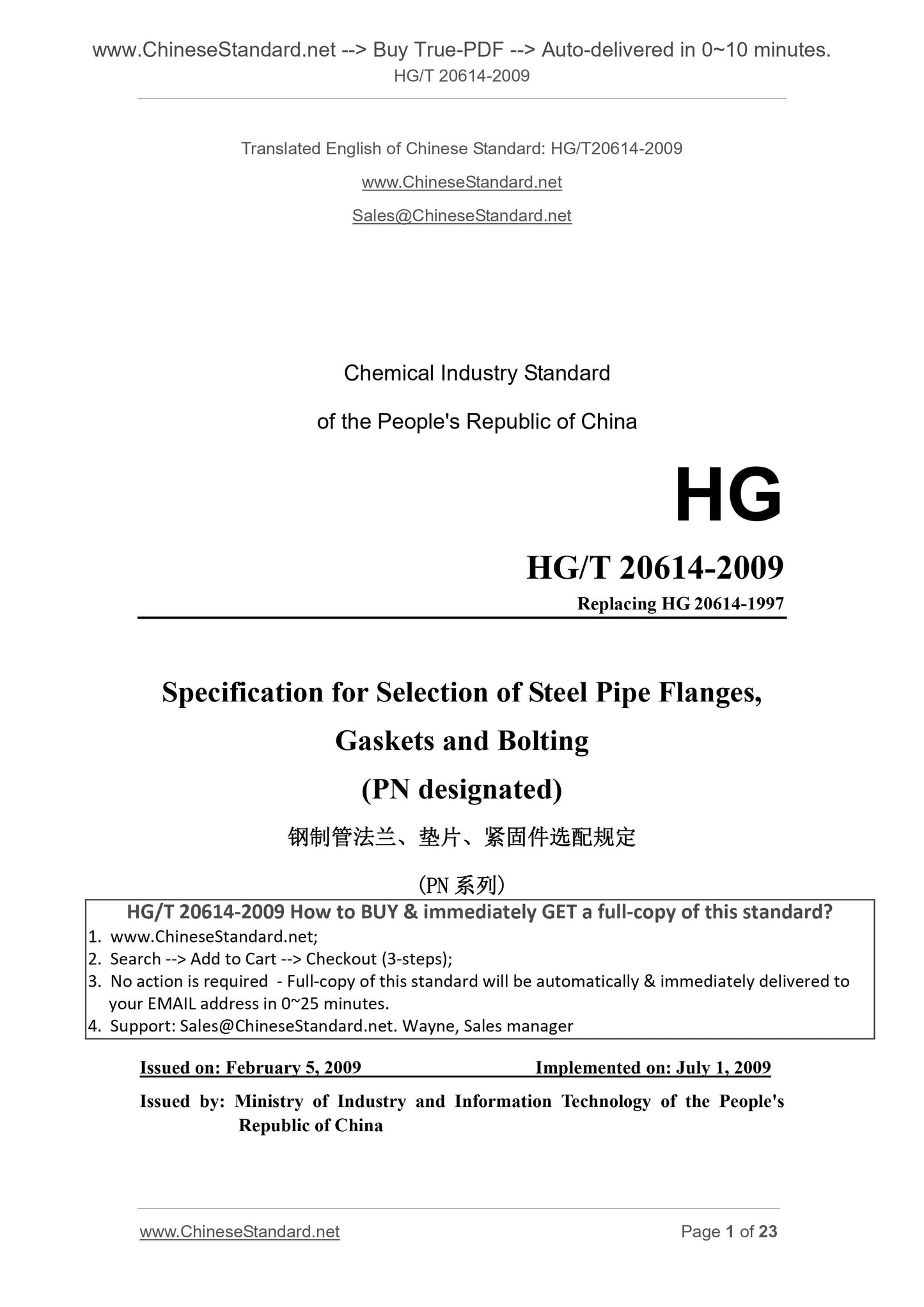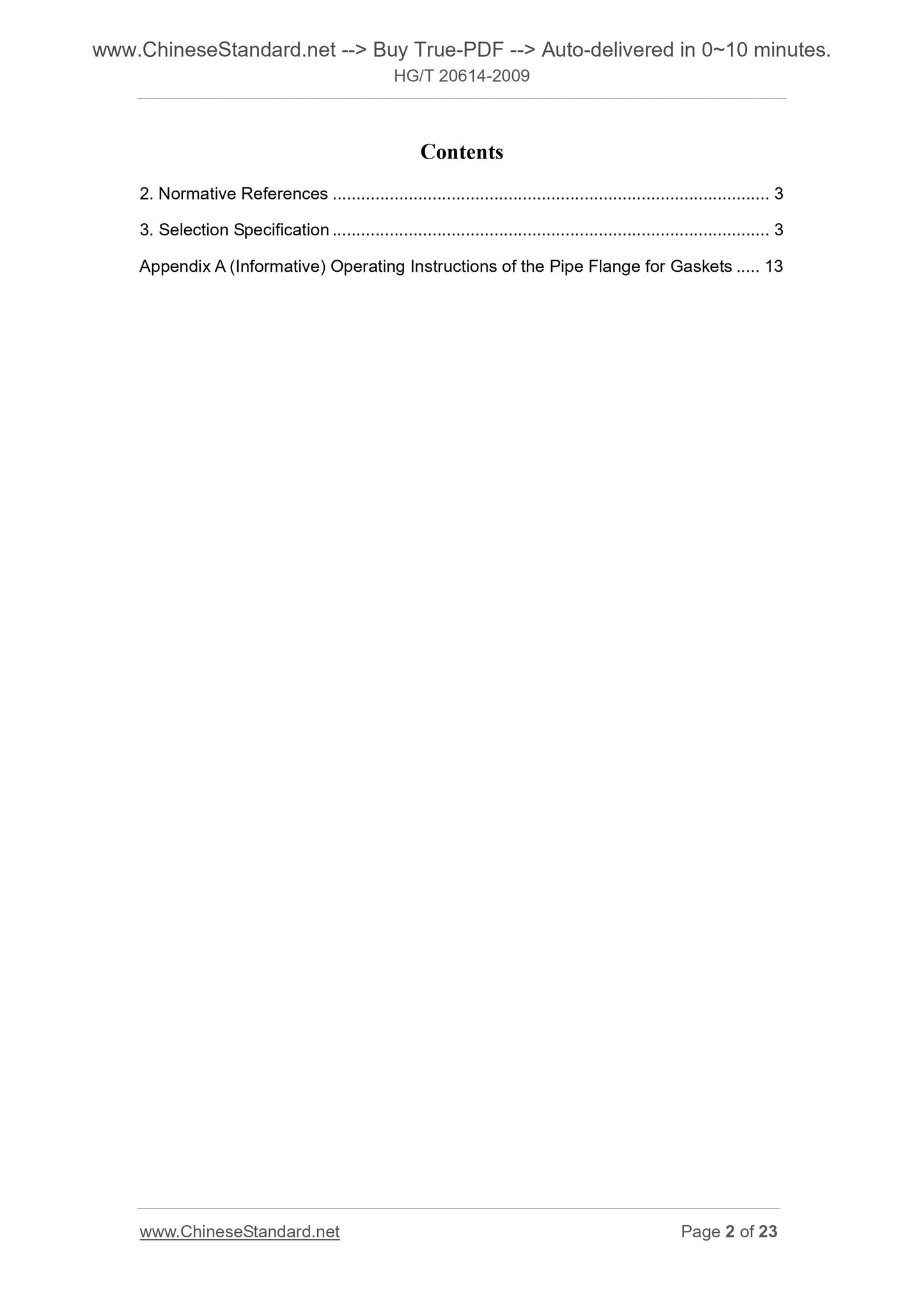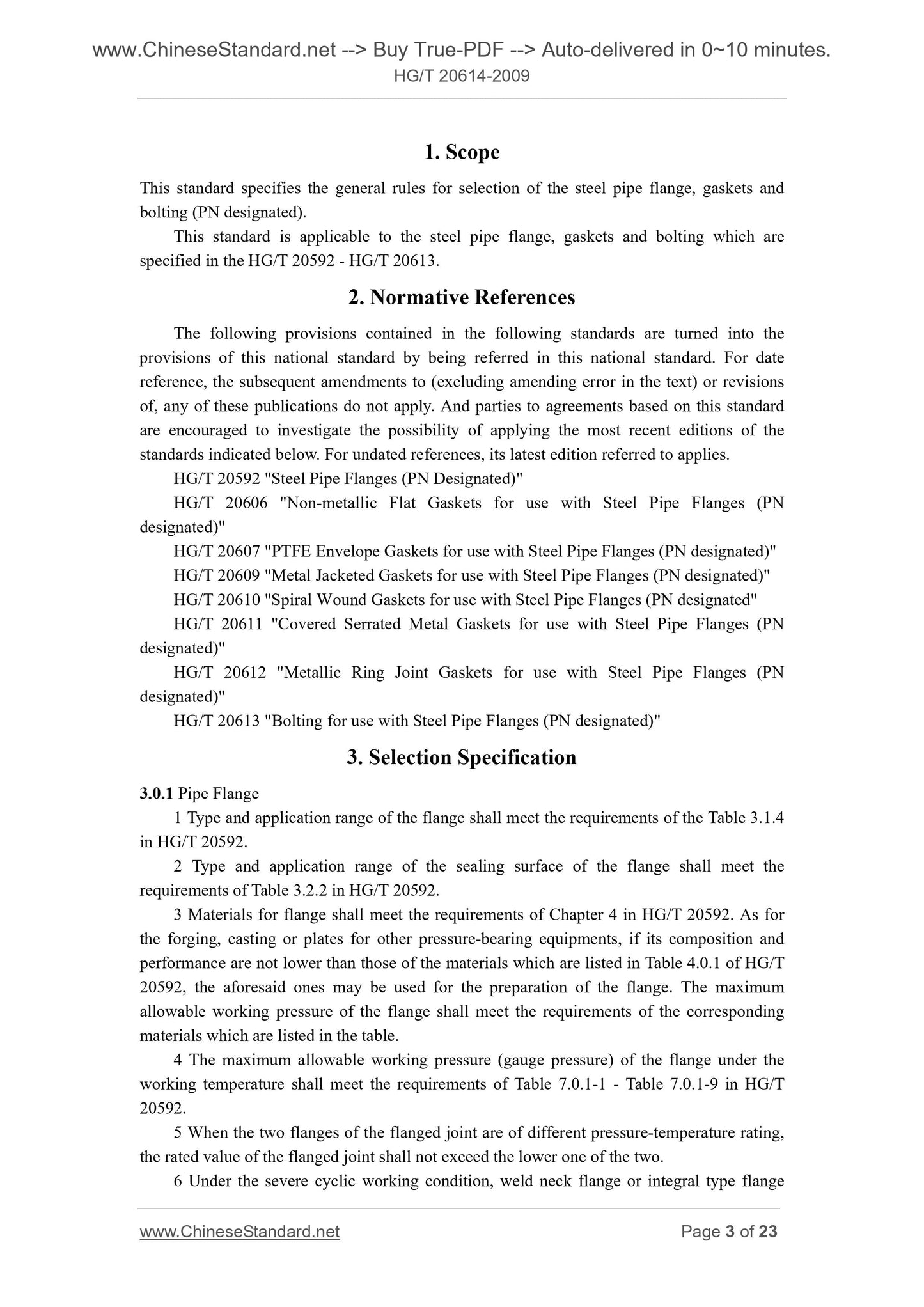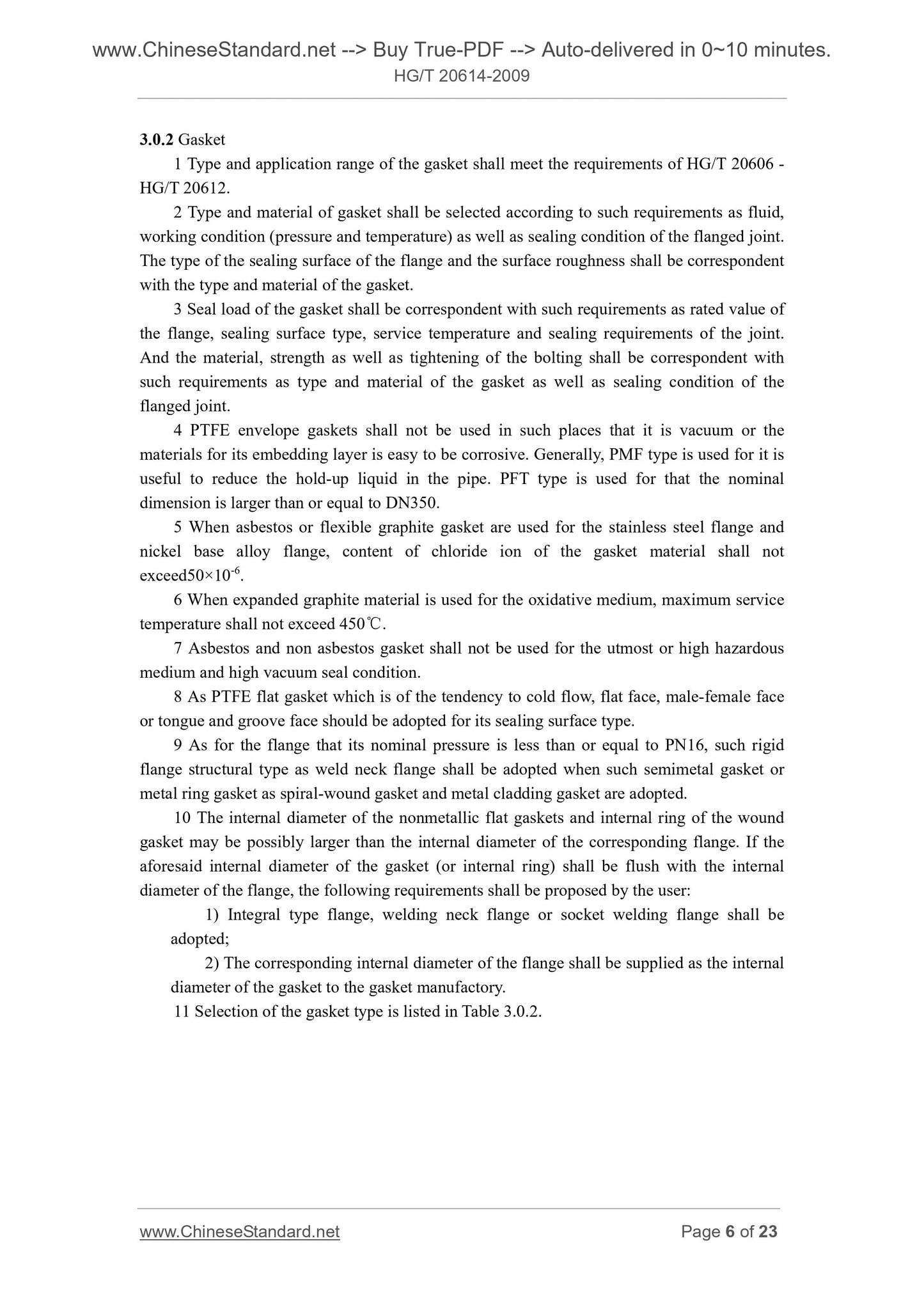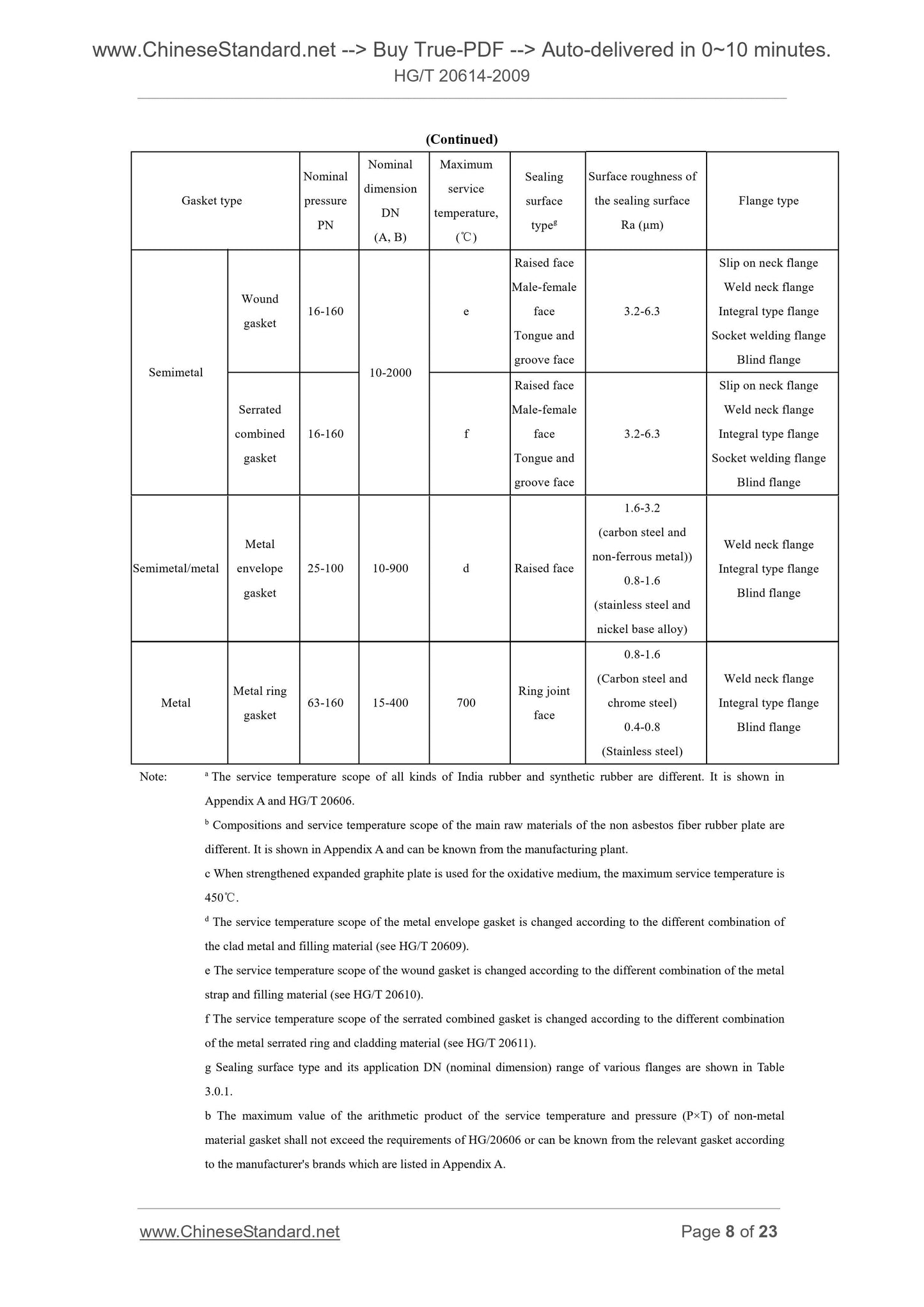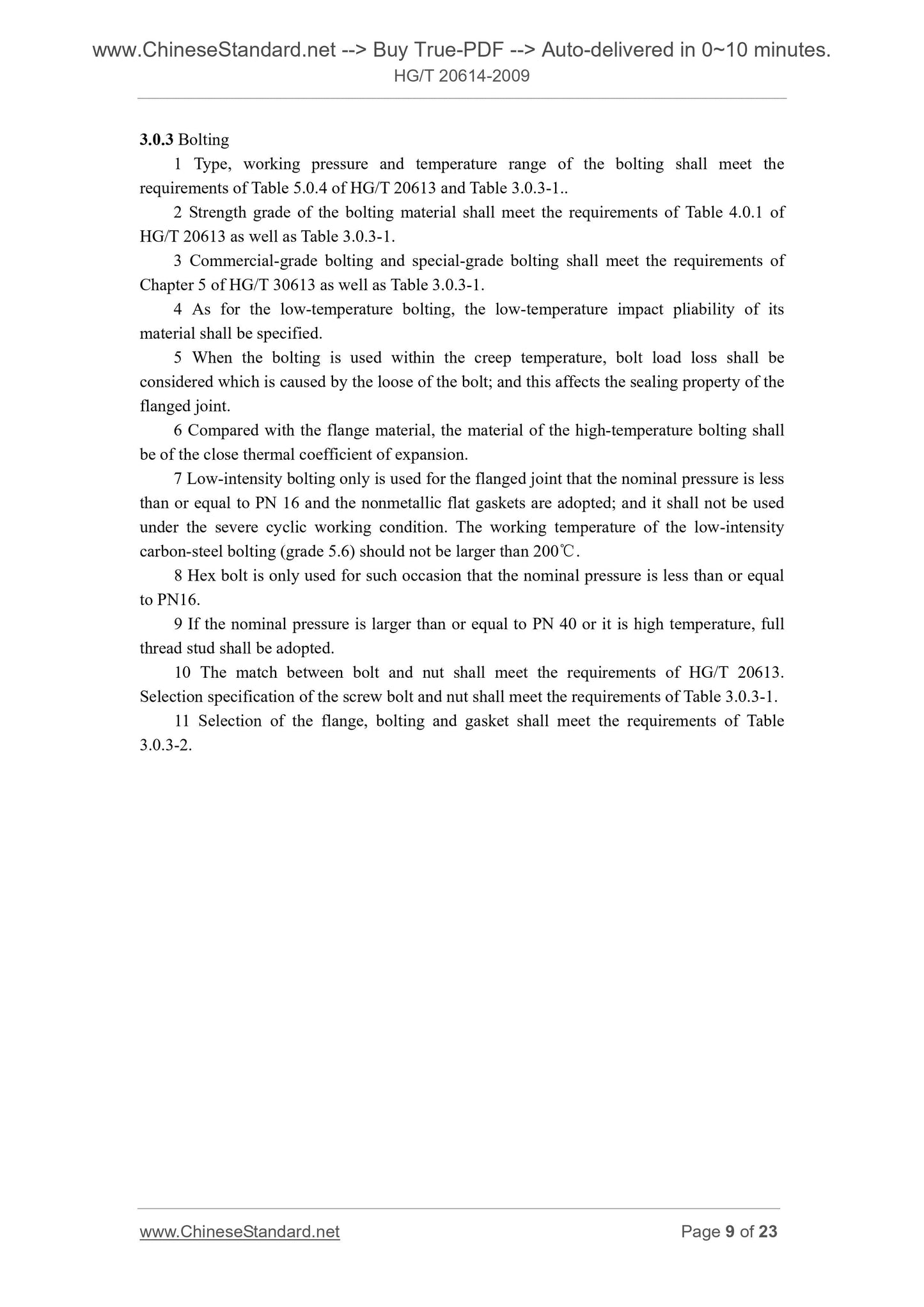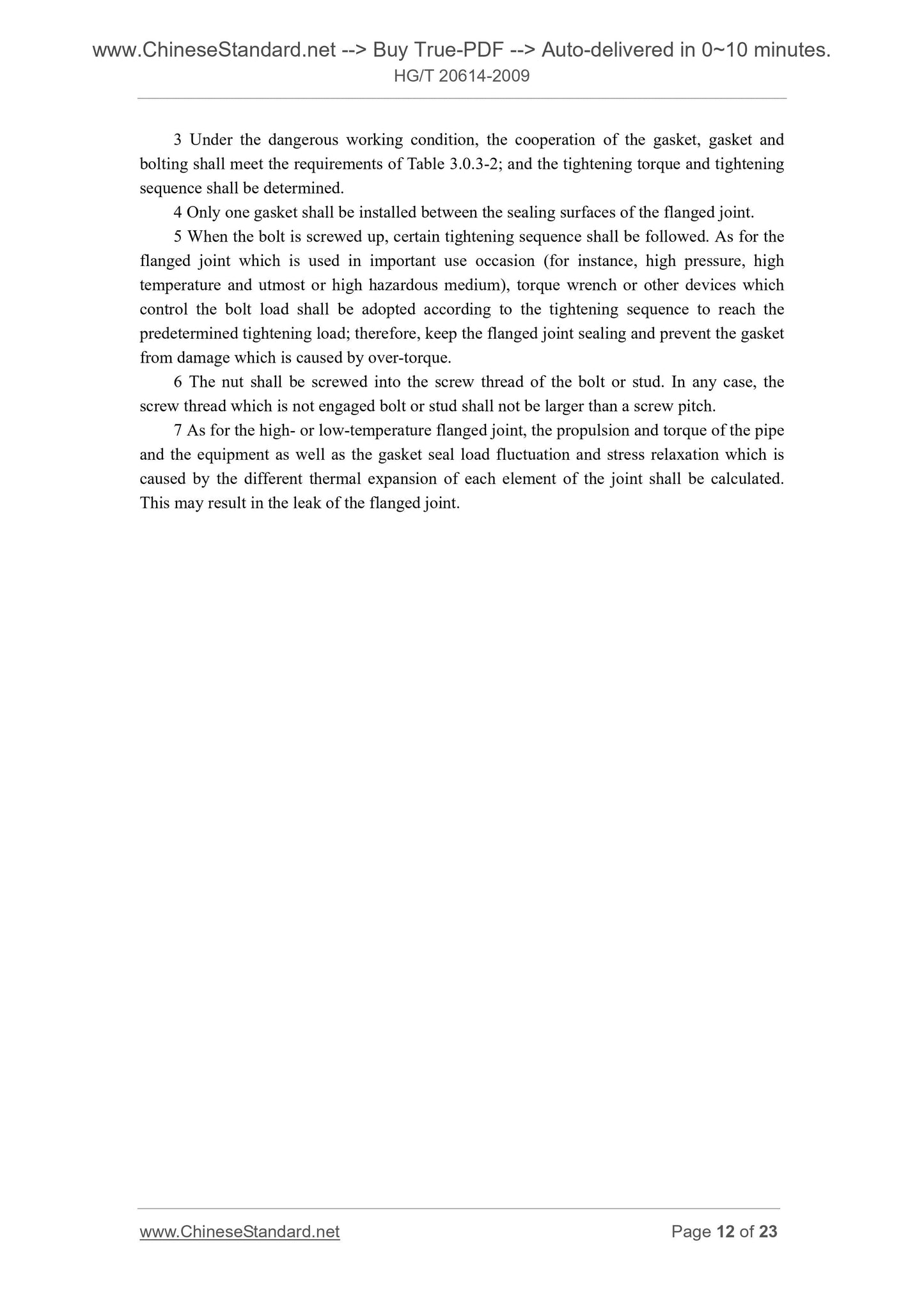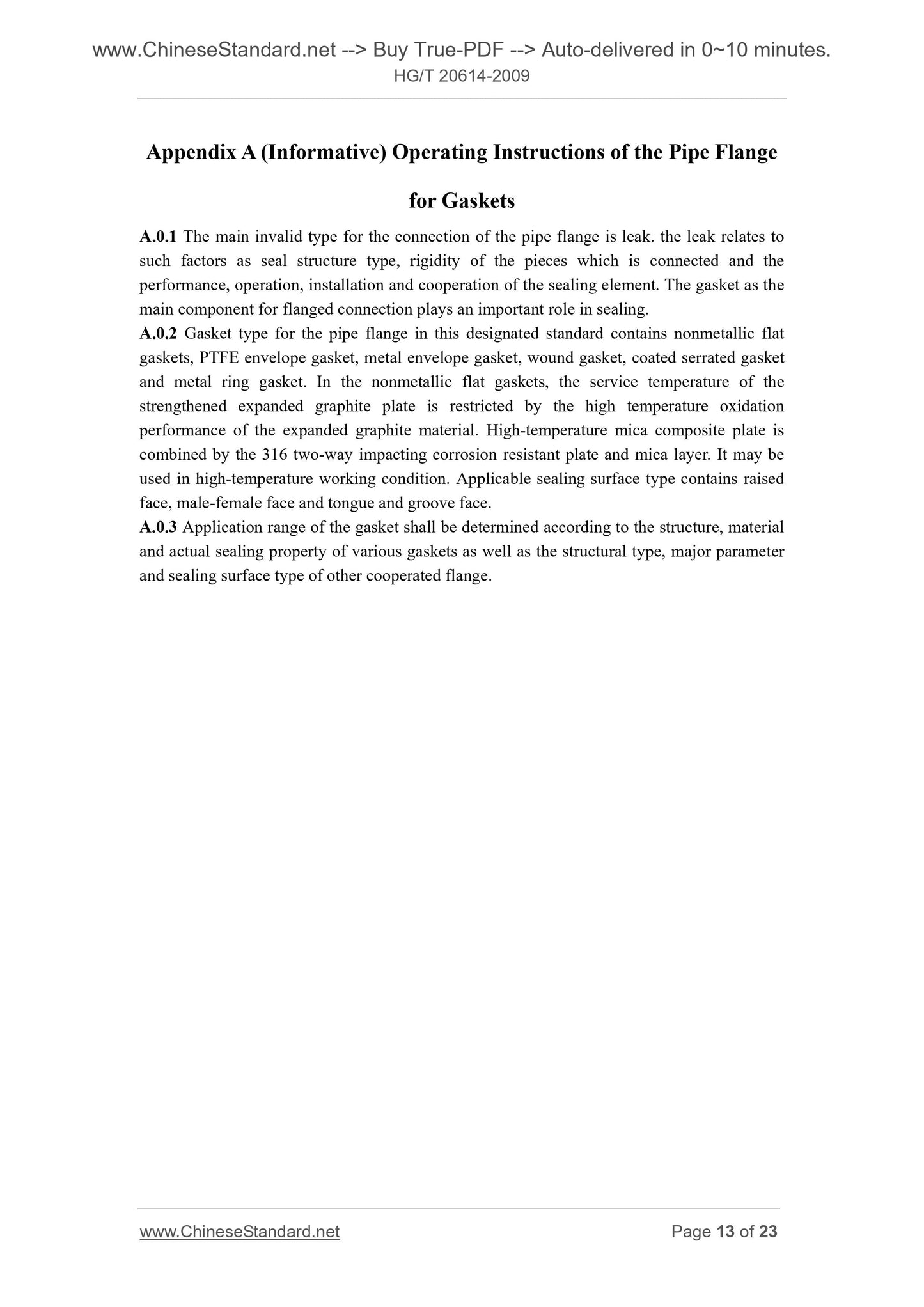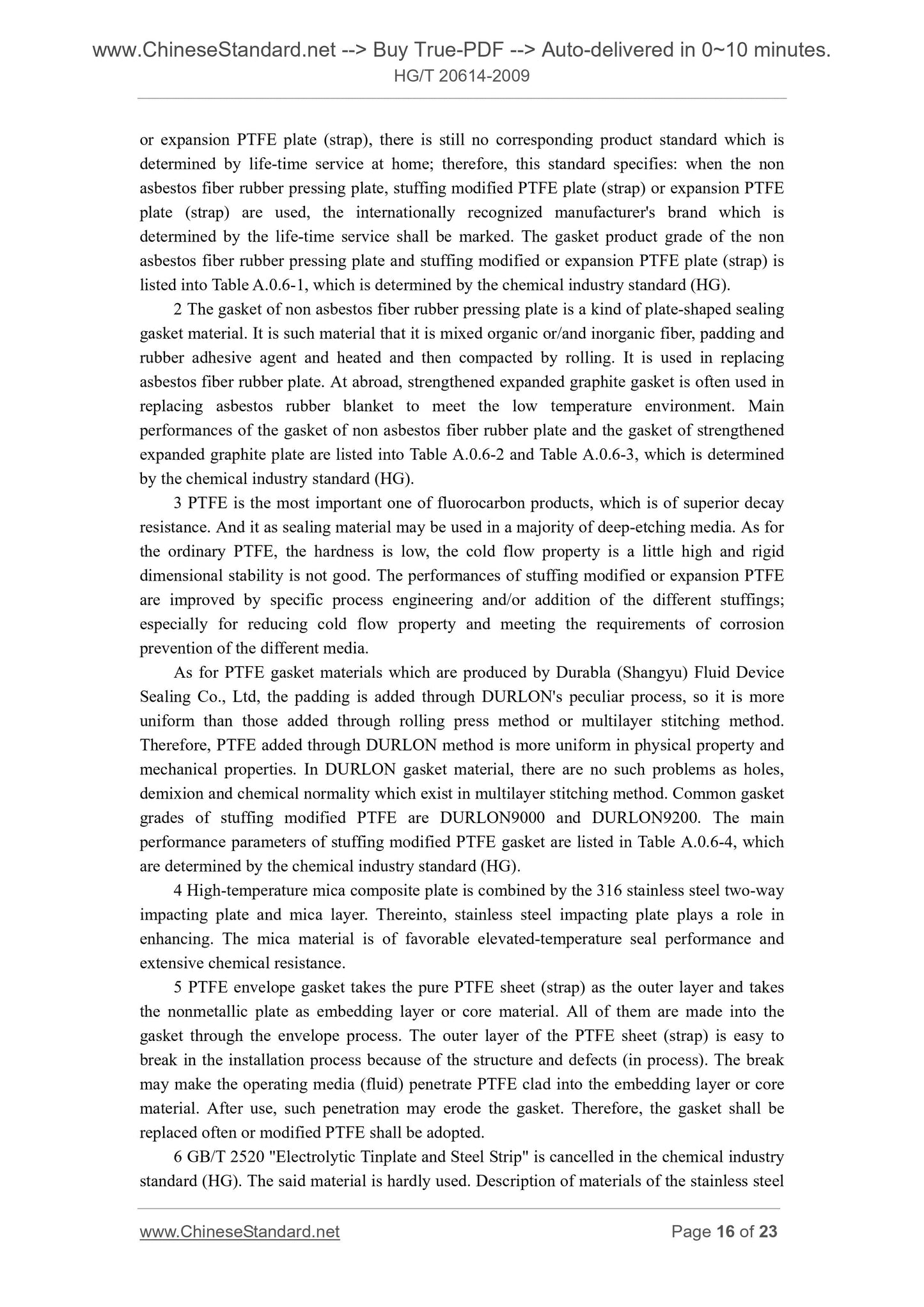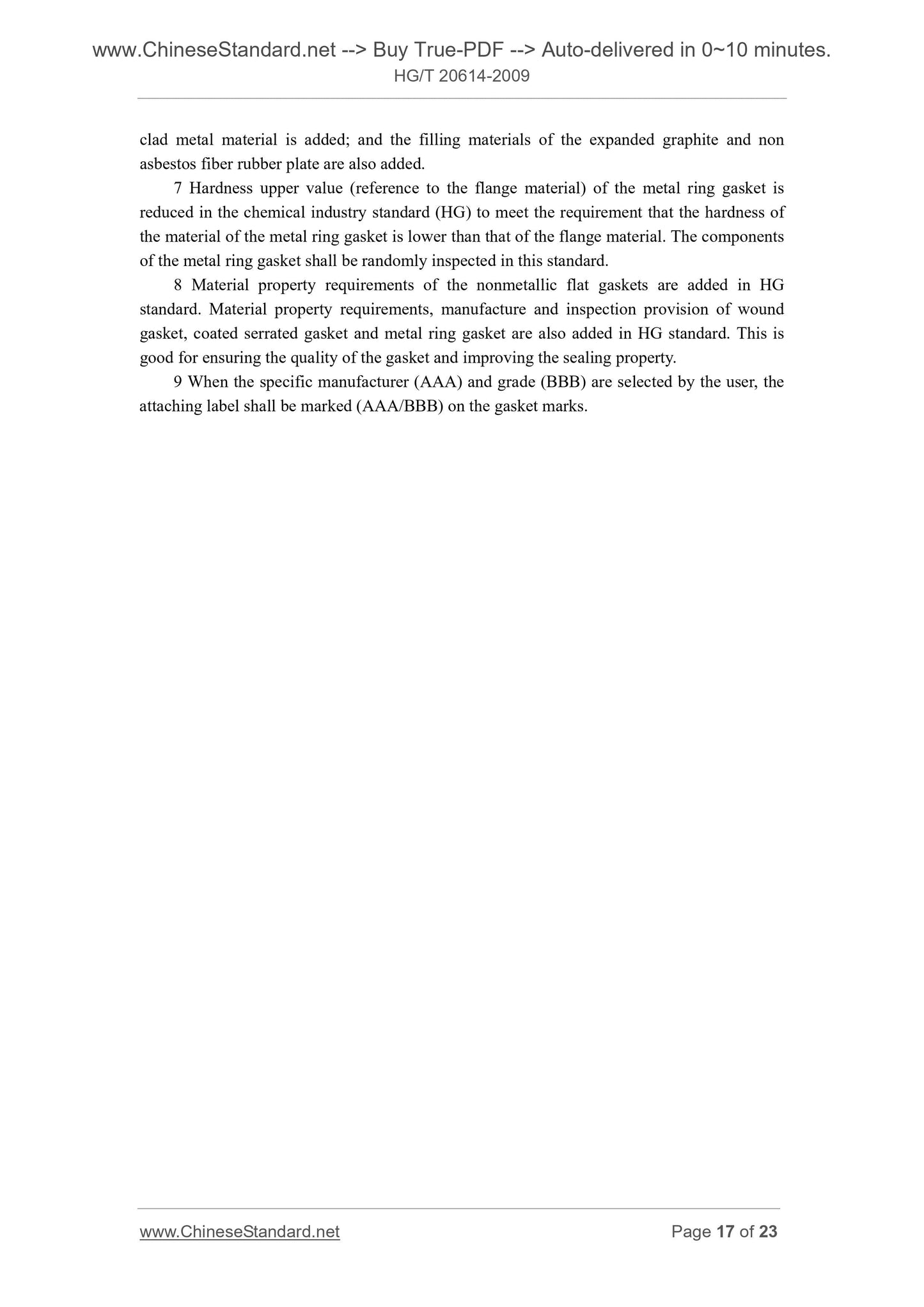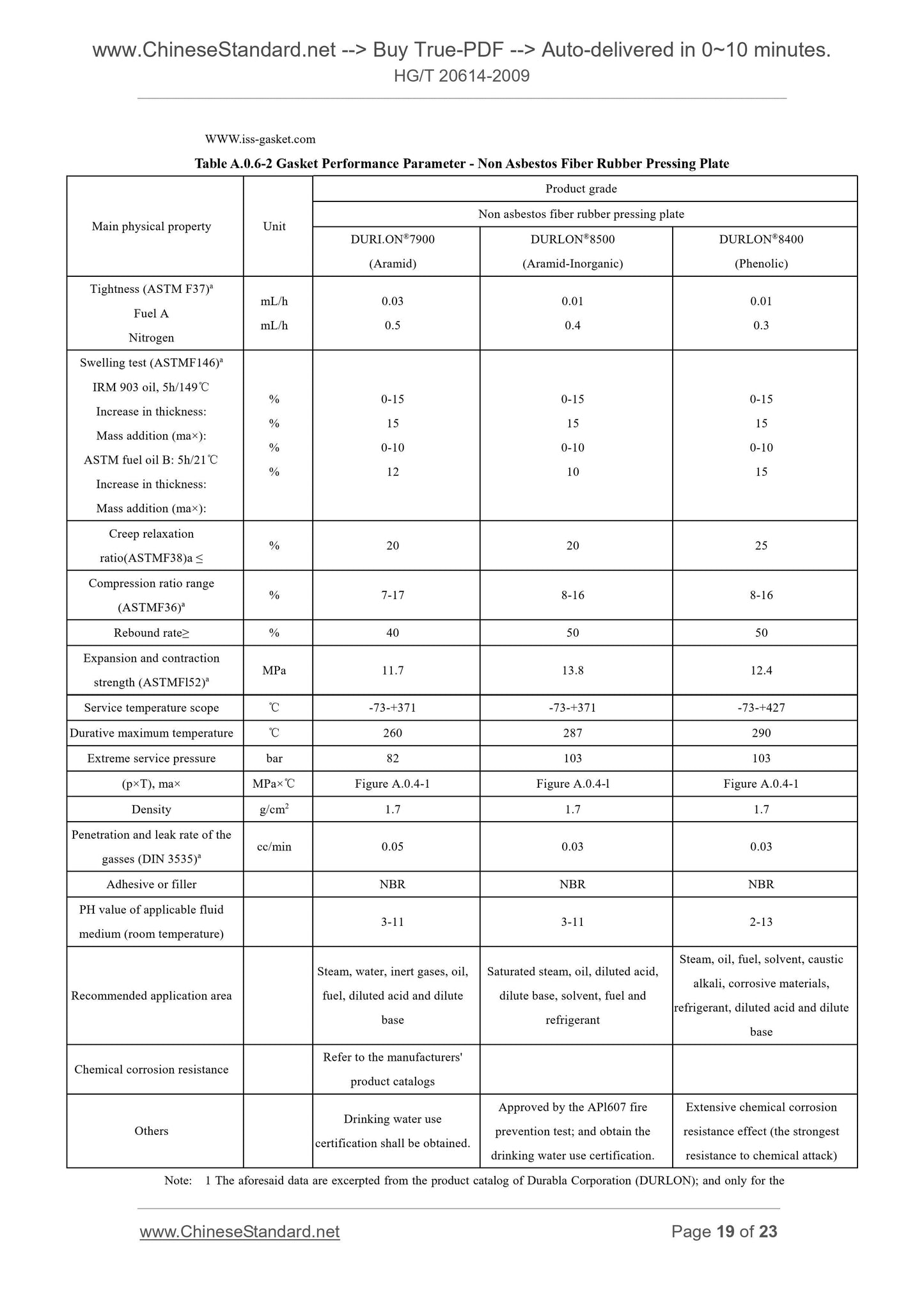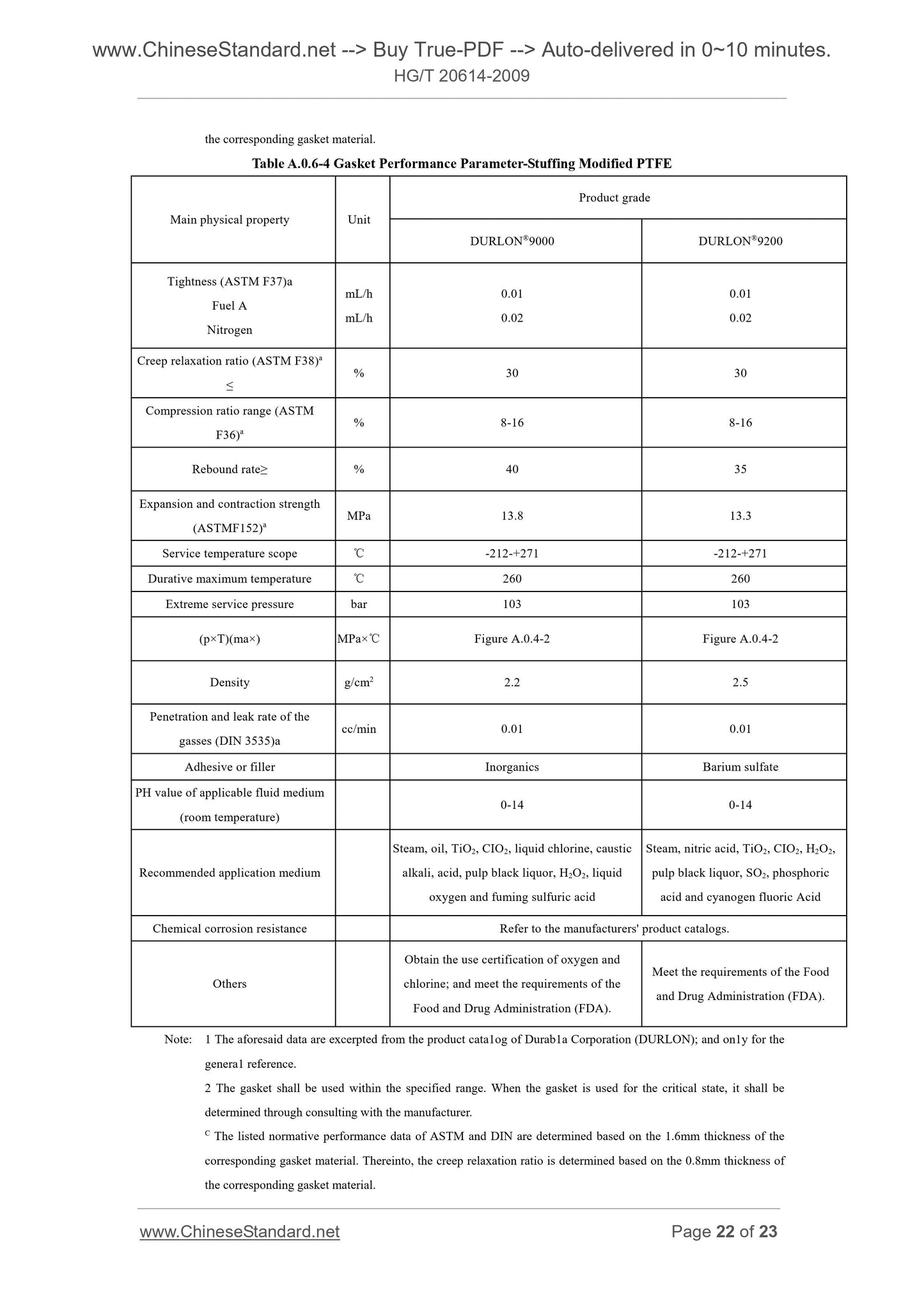1
/
of
12
www.ChineseStandard.us -- Field Test Asia Pte. Ltd.
HG/T 20614-2009 English PDF (HG/T20614-2009)
HG/T 20614-2009 English PDF (HG/T20614-2009)
Regular price
$85.00
Regular price
Sale price
$85.00
Unit price
/
per
Shipping calculated at checkout.
Couldn't load pickup availability
HG/T 20614-2009: Specification for ion of steel pipe flanges, gaskets and bolting (PN designated)
Delivery: 9 seconds. Download (and Email) true-PDF + Invoice.Get Quotation: Click HG/T 20614-2009 (Self-service in 1-minute)
Newer / historical versions: HG/T 20614-2009
Preview True-PDF
Scope
HG/T 20612.2 Type and material of gasket shall be selected according to such requirements as fluid,
working condition (pressure and temperature) as well as sealing condition of the flanged joint.
The type of the sealing surface of the flange and the surface roughness shall be correspondent
with the type and material of the gasket.
3 Seal load of the gasket shall be correspondent with such requirements as rated value of
the flange, sealing surface type, service temperature and sealing requirements of the joint.
And the material, strength as well as tightening of the bolting shall be correspondent with
such requirements as type and material of the gasket as well as sealing condition of the
flanged joint.
4 PTFE envelope gaskets shall not be used in such places that it is vacuum or the
materials for its embedding layer is easy to be corrosive. Generally, PMF type is used for it is
useful to reduce the hold-up liquid in the pipe. PFT type is used for that the nominal
dimension is larger than or equal to DN350.
5 When asbestos or flexible graphite gasket are used for the stainless steel flange and
nickel base alloy flange, content of chloride ion of the gasket material shall not
exceed50×10-6.
6 When expanded graphite material is used for the oxidative medium, maximum service
temperature shall not exceed 450.℃
7 Asbestos and non asbestos gasket shall not be used for the utmost or high hazardous
medium and high vacuum seal condition.
8 As PTFE flat gasket which is of the tendency to cold flow, flat face, male-female face
or tongue and groove face should be adopted for its sealing surface type.
9 As for the flange that its nominal pressure is less than or equal to PN16, such rigid
flange structural type as weld neck flange shall be adopted when such semimetal gasket or
metal ring gasket as spiral-wound gasket and metal cladding gasket are adopted.
10 The internal diameter of the nonmetallic flat gaskets and internal ring of the wound
gasket may be possibly larger than the internal diameter of the corresponding flange. If the
aforesaid internal diameter of the gasket (or internal ring) shall be flush with the internal
diameter of the flange, the following requirements shall be proposed by the user.
1) Integral type flange, welding neck flange or socket welding flange shall be
adopted;
2) The corresponding internal diameter of the flange shall be supplied as the internal
diameter of the gasket to the gasket manufactory.
11 Selection of the gasket type is listed in Table 3.0.2.
(Continued)
Gasket type
Nominal
pressure
PN
Nominal
dimension
DN
(A, B)
Maximum
service
temperature,
()℃
Sealing
surface
typeg
Surface roughness of
the sealing surface
Ra (μm)
Flange type
Semimetal
Wound
gasket 16-160
10-2000
Raised face
Male-female
face
Tongue and
groove face
3.2-6.3
Slip on neck flange
Weld neck flange
Integral type flange
Socket welding flange
Blind flange
Serrated
combined
gasket
16-160 f
Raised face
Male-female
face
Tongue and
groove face
3.2-6.3
Slip on neck flange
Weld neck flange
Integral type flange
Socket welding flange
Blind flange
Semimetal/metal
Metal
envelope
gasket
25-100 10-900 d Raised face
1.6-3.2
(carbon steel and
non-ferrous metal))
0.8-1.6
(stainless steel and
nickel base alloy)
Weld neck flange
Integral type flange
Blind flange
Metal Metal ring gasket 63-160 15-400 700
Ring joint
face
0.8-1.6
(Carbon steel and
chrome steel)
0.4-0.8
(Stainless steel)
Weld neck flange
Integral type flange
Blind flange
Note. a The service temperature scope of all kinds of India rubber and synthetic rubber are different. It is shown in
Appendix A and HG/T 20606.
b Compositions and service temperature scope of the main raw materials of the non asbestos fiber rubber plate are
different. It is shown in Appendix A and can be known from the manufacturing plant.
c When strengthened expanded graphite plate is used for the oxidative medium, the maximum service temperature is
450.℃
d The service temperature scope of the metal envelope gasket is changed according to the different combination of
the clad metal and filling material (see HG/T 20609).
e The service temperature scope of the wound gasket is changed according to the different combination of the metal
strap and filling material (see HG/T 20610).
f The service temperature scope of the serrated combined gasket is changed according to the different combination
of the metal serrated ring and cladding material (see HG/T 20611).
g Sealing surface type and its application DN (nominal dimension) range of various flanges are shown in Table
3.0.1.
b The maximum value of the arithmetic product of the service temperature and pressure (P×T) of non-metal
material gasket shall not exceed the requirements of HG/20606 or can be known from the relevant gasket according
to the manufacturer's brands which are listed in Appendix A.
3.0.3 Bolting
1 Type, working pressure and temperature range of the bolting shall meet the
requirements of Table 5.0.4 of HG/T 20613 and Table 3.0.3-1..
2 Strength grade of the bolting material shall meet the requirements of Table 4.0.1 of
HG/T 20613 as well as Table 3.0.3-1.
3 Commercial-grade bolting and special-grade bolting shall meet the requirements of
Chapter 5 of HG/T 30613 as well as Table 3.0.3-1.
4 As for the low-temperature bolting, the low-temperature impact pliability of its
material shall be specified.
5 When the bolting is used within the creep temperature, bolt load loss shall be
considered which is caused by the loose of the bolt; and this affects the sealing property of the
flanged joint.
6 Compared with the flange material, the material of the high-temperature bolting shall
be of the close thermal coefficient of expansion.
7 Low-intensity bolting only is used for the flanged joint that the nominal pressure is less
than or equal to PN 16 and the nonmetallic flat gaskets are adopted; and it shall not be used
under the severe cyclic working condition. The working temperature of the low-intensity
carbon-steel bolting (grade 5.6) should not be larger than 200.℃
8 Hex bolt is only used fo...
Basic Data
| Standard ID | HG/T 20614-2009 (HG/T20614-2009) |
| Description (Translated English) | Specification for ion of steel pipe flanges, gaskets and bolting (PN designated) |
| Sector / Industry | Chemical Industry Standard (Recommended) |
| Classification of Chinese Standard | J15 |
| Classification of International Standard | 23.040.60 |
| Word Count Estimation | 19,172 |
| Date of Issue | 2009-02-05 |
| Date of Implementation | 2009-07-01 |
| Older Standard (superseded by this standard) | HG 20614-1997 |
| Quoted Standard | HG/T 20592; HG/T 20606; HG/T 20607; HG/T 20609; HG/T 20610; HG/T 20611; HG/T 20612; HG/T 20613 |
| Regulation (derived from) | Engineering [ 2009 ] No. 27 |
| Issuing agency(ies) | Ministry of Industry and Information Technology |
| Summary | This standard specifies the steel pipe flanges, gaskets and fasteners (PN series) when used in conjunction with the general rules. This standard applies to HG/T 20592 ~ HG20613 stipulated steel pipe flanges, gaskets and fasteners. |
Share
